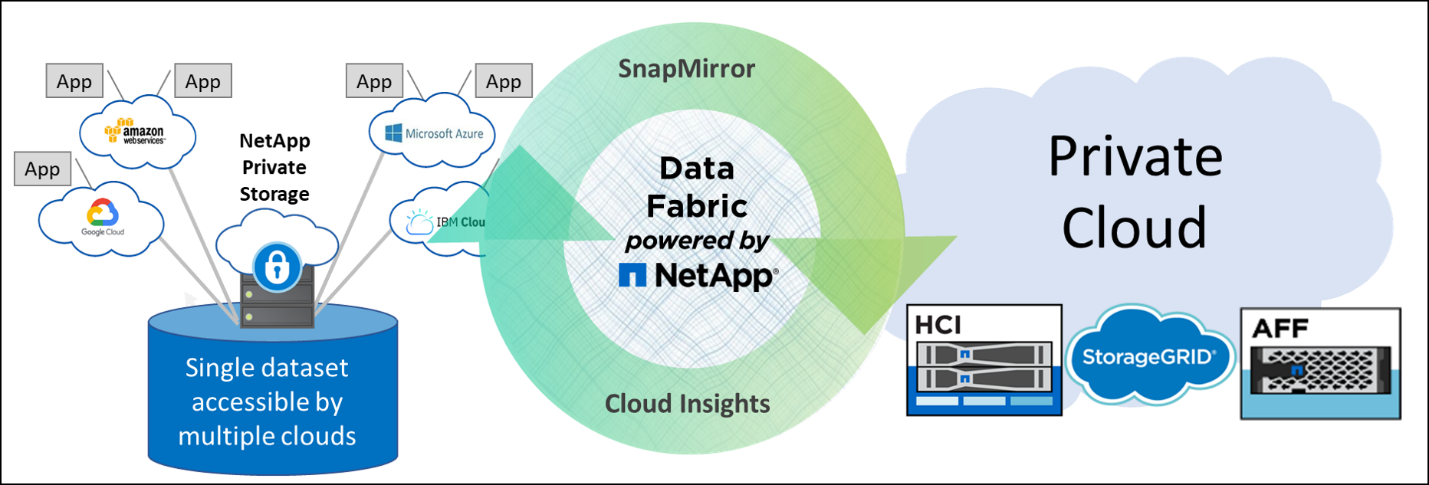NetApp Private Storage Serves as a Near-Cloud Alternative for NetApp IT


Kamal Vyas
 Like many IT organizations, NetApp IT finds burstable compute resources available through public cloud providers to be very attractive. Yet as cautious IT professionals responsible for NetApp’s data, we consider data privacy, compliancy, and security to be of utmost importance. The challenge for all of us is figuring out how to use the cloud on our own terms and still maintain control, access, and management of our data. It’s about recognizing that data has mass—i.e. is difficult to move—when choosing your “best of cloud” solution.
Like many IT organizations, NetApp IT finds burstable compute resources available through public cloud providers to be very attractive. Yet as cautious IT professionals responsible for NetApp’s data, we consider data privacy, compliancy, and security to be of utmost importance. The challenge for all of us is figuring out how to use the cloud on our own terms and still maintain control, access, and management of our data. It’s about recognizing that data has mass—i.e. is difficult to move—when choosing your “best of cloud” solution.
Inside NetApp IT we find that NetApp® Private Storage (NPS) is a solid and cloud agnostic solution because it is like bringing your own storage to any public cloud. Today, over 80% of our current cloud workloads use the NPS solution.
Best of all, NPS allows a single dataset from within our private cloud to be accessed by multiple cloud providers depending on the architecture. We can use the best public cloud option while preserving data ownership, because the data resides on a dedicated system inside Equinix, a cloud-connected colocation facility that is physically close to the cloud providers. Moreover, if we must change cloud providers, we can quickly realign because the data is always under our control. There is no lock-in.
Equinix offers cross-connects to the cloud providers using high-throughput direct connections that support the low latency required by databases. For most of our workloads, we target the latency to be under 2 milliseconds.
There is some upfront work involved in setting up of the colocation and connectivity. You need to consider egress costs because NPS is outside the public cloud environment; you will be charged for data that exits the cloud and goes to NPS. For us, egress data charges are less than 1% of our total Amazon bill every month. But for workloads with heavy writes, you should definitely estimate egress charges ahead of time.
 We replicate our dataset from our private cloud to NPS by using NetApp SnapMirror® technology. SnapMirror keeps the data synchronized and allows it to be available to any cloud provider. NPS is an extension of our hybrid cloud offering that can scale according to application needs. One example is the NetApp Active IQ® digital advisor, a key customer system that differentiates NetApp from its competition.
We replicate our dataset from our private cloud to NPS by using NetApp SnapMirror® technology. SnapMirror keeps the data synchronized and allows it to be available to any cloud provider. NPS is an extension of our hybrid cloud offering that can scale according to application needs. One example is the NetApp Active IQ® digital advisor, a key customer system that differentiates NetApp from its competition.
Active IQ Uses NPS
Active IQ provides NetApp customers like you with important information and tools designed to analyze, model, and optimize our their storage infrastructure. It lets you see how datasets are being used, view patching and upgrade recommendations, and other general health information.To host the Active IQ system, we use NPS at an Equinix facility situated next to AWS. This approach replaced our previous on-premises solution that was architected with extra capacity to handle peak volumes. With NPS, Active IQ uses burstable cloud compute resources during heavy processing times while retaining the best practices of enterprise-class storage with full control of this critical data.
Important Benefits of NPS
- Data compliance and privacy are intrinsically handled because NPS sits in its own cage at Equinix. Auditors like this approach because their audit process treats the storage as if it were in our private cloud.
- NPS is cloud-agnostic and applications can easily move between clouds. For example, the migration would be easy if we decided to move our applications from AWS to Azure because the data remains on NPS and never moves. Again, this is important because moving data is difficult. It helps avoid vendor lock-in.
- By using SnapMirror technology with NPS, we can replicate data between our private cloud and the public cloud. We can have the primary applications running on premises and a disaster recovery instance running in the public cloud. We no longer need to invest in disaster recovery hardware.
- This approach does not just apply to disaster recovery. You don’t need to maintain capacity in your private cloud for temporary workloads like development, testing, and sandbox. With SnapMirror and a data fabric powered by NetApp, you can move temporary workloads to the public cloud.
- NPS is built on NetApp ONTAP® data management software with deduplication, compression, and compaction features, which means 60% less physical storage capacity.
Kamal Vyas
Kamal Vyas is the Chief Infrastructure Architect for NetApp IT and is responsible for NetApp IT’s hybrid cloud architecture, translating the NetApp IT vision into an infrastructure design that spans the public and private clouds. Kamal is a cloud evangelist, advocating for organizational adoption of and business transformation through the cloud and Data Fabric. Kamal has expertise in strategy, architecture and design of next-gen infrastructure solutions and transition to an IT as a Service model.